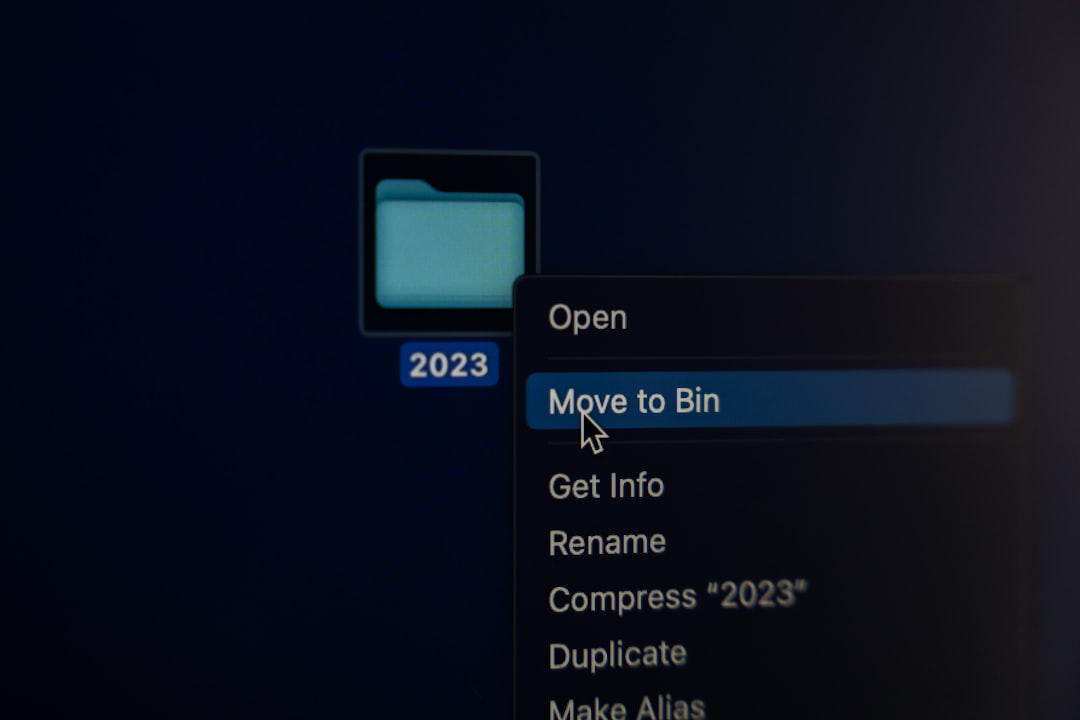Understanding 400 Bad Request: A Beginner’s Guide
Discover the basics of the 400 Bad Request error and learn how to troubleshoot it effectively. Enhance your web skills today!
Introduction
Understanding the 400 Bad Request Error
The 400 Bad Request error is an HTTP status code that indicates a server cannot process a request due to client-side issues. This error is typically encountered when the server determines that the client’s request is malformed or contains invalid syntax.
As a result, the server is unable to fulfill the request, leading to the 400 Bad Request response.
Common Causes of the 400 Bad Request Error
Several factors can lead to a 400 Bad Request error. One of the most common causes is incorrect URL syntax, where the URL may contain illegal characters or be improperly formatted.
Additionally, this error can occur due to invalid cookies or corrupted browser cache, which interfere with the server’s ability to interpret the request correctly.
Another frequent cause is oversized request headers, where the client sends headers that exceed the server’s limit. This can happen when cookies or other header data become too large, causing the server to reject the request.
In some cases, the error may also result from incorrect file formats or unsupported media types being sent to the server.
Impact on User Experience
The 400 Bad Request error can significantly impact user experience, as it prevents users from accessing the desired web resources. When users encounter this error, they may become frustrated, leading to a negative perception of the website or application.
This can result in decreased user engagement and potential loss of business opportunities.
To mitigate these effects, it is crucial for website administrators and developers to identify and address the underlying causes of the 400 Bad Request error promptly. Implementing proper error handling mechanisms and providing clear error messages can help users understand the issue and take corrective actions, thereby enhancing the overall user experience.
Steps for Troubleshooting
To troubleshoot a 400 Bad Request error, users can start by checking the URL for any typos or illegal characters.
Clearing the browser cache and cookies can also resolve issues related to corrupted data. If the problem persists, users may try accessing the website using a different browser or device to rule out client-specific issues.
For developers, examining server logs can provide insights into the specific cause of the error.
Ensuring that request headers are within acceptable limits and that the server is configured to handle the expected request formats can prevent future occurrences of the error. By systematically addressing these aspects, both users and developers can effectively resolve 400 Bad Request errors.
Explanation
What is a 400 Bad Request?
The 400 Bad Request is an HTTP status code that indicates the server cannot or will not process the request due to a client error.
This error is a response from the server to signify that the request sent by the client was invalid or corrupted. The server, therefore, refuses to fulfill the request, and the client must correct the error before attempting to resend the request.
Common Causes of a 400 Bad Request
There are several reasons why a 400 Bad Request might occur.
One common cause is malformed request syntax, where the client sends data that does not adhere to the HTTP protocol standards. Another reason could be invalid request message framing, where the structure of the request is incorrect or incomplete.
Additionally, a 400 error can result from deceptive request routing, where the URL is incorrect or contains invalid characters.
Furthermore, a 400 Bad Request can occur if the request headers are too large, exceeding the server’s limits, or if there is an issue with the request’s authentication credentials. In some cases, the error may arise from a mismatch between the server’s expectations and the client’s request, such as incorrect content-type headers.
How to Resolve a 400 Bad Request
To resolve a 400 Bad Request, the client should first verify the URL for any typing errors or invalid characters.
Ensuring that the URL is correctly formatted and free of special characters that are not URL-encoded can often solve the issue. Additionally, clearing the browser’s cache and cookies may help, as corrupted or outdated data can sometimes lead to this error.
If the error persists, checking the request headers for any inconsistencies or oversized data is advisable.
Reducing the size of the headers or correcting any incorrect information can prevent the server from rejecting the request. For developers, examining the server logs can provide insights into the specific cause of the error, allowing for targeted troubleshooting.
How-To
Understand the 400 Bad Request Error
The 400 Bad Request error is an HTTP status code that indicates the server could not understand the request due to invalid syntax.
This error is typically caused by a client-side issue, meaning the problem lies with the request being sent to the server. Understanding this error is crucial for diagnosing and fixing the issue effectively.
Identify Common Causes
Several factors can lead to a 400 Bad Request error.
Common causes include malformed request syntax, invalid request message framing, or deceptive request routing. Additionally, incorrect URLs, including characters that are not properly encoded, can also trigger this error.
It’s essential to identify the root cause to apply the correct solution.
Check the URL
One of the first steps to resolve a 400 Bad Request error is to verify the URL. Ensure there are no typing errors and that the URL is correctly formatted.
Pay attention to special characters and ensure they are properly encoded. If the URL contains query strings, check for any syntax errors or unsupported characters.
Clear Browser Cache and Cookies
Sometimes, a 400 Bad Request error can be resolved by clearing your browser’s cache and cookies.
Cached data or corrupted cookies can interfere with the request being sent to the server. Clearing them can help refresh the session and potentially resolve the error.
Disable Browser Extensions
Browser extensions can sometimes interfere with HTTP requests, leading to a 400 Bad Request error.
Temporarily disable any extensions and try accessing the URL again. If the error is resolved, re-enable the extensions one by one to identify the culprit.
Check File Upload Size
If the error occurs during a file upload, check the file size.
Some servers have limitations on the size of files that can be uploaded. Ensure the file does not exceed the server’s limit.
If necessary, try compressing the file or breaking it into smaller parts.
Contact the Website Administrator
If you’ve tried all the above steps and the 400 Bad Request error persists, the issue might be server-side. Contact the website administrator or support team for further assistance.
They may be able to provide additional insights or fix server-side configurations causing the error.
Precautions or Examples
Precautions to Prevent a 400 Bad Request
One of the primary precautions to prevent a 400 Bad Request error is ensuring that the request URL is correctly formatted. Double-check for any typographical errors, missing characters, or incorrect syntax in the URL.
This simple step can often resolve the issue before it arises.
Another precaution is to validate and sanitize user input on the client side. Implementing input validation can prevent malformed data from being sent to the server, thereby reducing the risk of encountering a 400 error.
Additionally, ensure that any special characters in the input are properly encoded.
Keeping the client and server software updated is also crucial. Regular updates can fix bugs and improve compatibility, reducing the likelihood of a 400 Bad Request error.
Ensure that both the browser and server are running the latest versions available.
Examples of 400 Bad Request Errors
A common example of a 400 Bad Request error occurs when a user attempts to access a website with an incorrect URL. For instance, if a user types http://example.com//page instead of http://example.com/page, the server may return a 400 error due to the malformed URL.
Another example is when an API request is made with incorrect or missing parameters.
If an API endpoint requires specific parameters and they are not provided or are incorrectly formatted, the server will respond with a 400 Bad Request error. For example, sending a request to http://api.example.com/data?user= without a valid user ID can trigger this error.
Additionally, a 400 error can occur when cookies associated with a website become corrupted or outdated.
In such cases, clearing the browser’s cookies for the affected site can often resolve the issue and allow the user to access the site without encountering the error.
FAQ
Q1: What does a “400 Bad Request” mean, and is it a security concern for my investment platform?
A1: A “400 Bad Request” error typically indicates that the server could not understand the request due to invalid syntax. This is usually a client-side issue, meaning the problem lies with the request sent by your browser or device. It is not inherently a security concern for your investment platform. However, if you encounter this error frequently, it might be worth checking your internet connection, clearing your browser cache, or ensuring your device’s settings are properly configured. If the issue persists, contacting the platform’s support team can help resolve any underlying problems.
Q2: Can a “400 Bad Request” error affect my expected returns or investment transactions?
A2: A “400 Bad Request” error itself does not directly affect your expected returns or the execution of investment transactions. It is a technical issue related to the communication between your device and the server. However, if you are unable to access your investment platform due to repeated errors, it could delay your ability to make timely investment decisions or transactions, which might indirectly impact your returns. To minimize disruptions, ensure your device and browser are updated, and have alternative access methods, such as a mobile app, ready to use.
Q3: When should I start worrying about frequent “400 Bad Request” errors on my investment platform?
A3: Occasional “400 Bad Request” errors are generally not a cause for concern, as they can happen due to temporary connectivity issues or minor client-side errors. However, if you experience these errors frequently, it may indicate a persistent issue that needs attention. Start by troubleshooting on your end: clear your browser cache, update your browser, and check your internet connection. If the problem continues, reach out to your investment platform’s customer support for assistance. Persistent errors could affect your ability to manage your investments effectively, so addressing them promptly is important.
Takeaway
Ready to take the first step towards financial empowerment? Explore beginner-friendly investment platforms, sign up for our weekly tips, or try our free calculator to start planning your future with confidence. Your journey to financial success begins here. Take a deep breath, trust yourself, and let’s get started together. As outlined in Reuters’ recent publication,











Comments